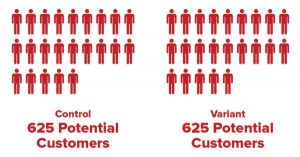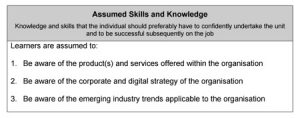— December 28, 2018
Data Driving Personalization and Account-Based Marketing While Protecting Buyer Privacy
Adobe announced that consumer demand for personalized content reached an all-time high in 2018, a theme that underscored some of the most prominent trends of the year. In this new world where 42% of buyers become “annoyed” by non-personalized content, adoption of account-based targeting strategies and innovative marketing technology solutions is growing rapidly in marketing organizations. And as the quest to improve the customer experience has made buyer data more precious than ever, marketers have had to tighten their approach to collecting it thanks to GDPR.
As we wrap up another busy year in marketing, I’d like to reflect on the major trends of the year and project how they’ll play out in 2019:
#1: Account-Based Marketing
2018 was the year Forbes declared Account-Based marketing (ABM) no longer a buzzword, but a fully baked marketing strategy. At ANNUITAS we would argue that most practitioners treat it more like a tactic than a strategy, but nearly a quarter of survey participants in Engagio’s 2018 ABM Outlook survey reported having ABM programs that were well underway or advanced, and about half reported having just started. To be successful, these companies will need to “do” ABM right — but there’s a lot of evidence the approach can pay off. Avoiding common Account-Based Marketing mistakes like excluding existing customers, neglecting inbound efforts and content strategy, and leaving it all to sales will significantly increase their likelihood of success.
What did success look like in 2018? DemandGen’s 2018 State of Account-Based Marketing report showcases the results from top-performing ABM practitioners: 89% saw an improvement in pipeline to closed deals and 91% of respondents reported higher average deal sizes for their ABM accounts compared to non-ABM accounts. Yet only a third of respondents reported having integrated their ABM strategy with their demand generation strategy, a missed opportunity to align common objectives and create an even greater impact.
Creating a strategy for existing customers actually became even more important in 2018, and will continue as a significant need in 2019. Earlier in the year, Deloitte found that more than a third of corporations with revenue over $ 1 billion intended to pick up the pace on acquisitions. For many organizations, that meant increased opportunities for cross-selling — an easier target than going after new deals with 60-70% success versus 20% for prospects (Marketingland). For companies looking to be acquired, the additional revenue from selling to existing customers could make or break the deal.
What can we expect in 2019? Hogan Lovells projects a continuation of what we saw in 2018 in terms of a healthy environment for mergers and acquisitions to take place. Particularly if your business serves Tech customers, you should consider the benefit of bringing your customer success team into the ABM fold and have your cross-sell playbook ready. Other trends for ABM will center around data and technology innovations. Forbes noted that ABM is becoming more doable with advancements in artificial intelligence, which leads us to our next point:
#2: MarTech: Personalization
In 2019 and beyond, increased adoption of AI technologies will move marketers away from simplistic data segmentation tactics toward a more granular approach to data splicing in the name of hyper-personalization. Context will join content at the throne as marketers acquire the insights they need to optimize distribution and show up in more relevant ways.
Although your CMO probably won’t be replaced anytime soon, marketers edged further into the realm of AI with technologies like personalization engines in 2018. According to Gartner, personalization engines “apply context about individual users and their circumstances to select, tailor and delivery messaging such as content, offers and other interactions through digital channels in support of three use cases – marketing, digital commerce and customer experience.” This was the year Gartner released its first global magic quadrant for personalization engine software solutions, noting its featured vendors had projected a 35% increase in revenue between year over year.
Adobe’s 2018 Digital Trends study revealed that content and experience was the primary focus for marketing, creative and IT professionals worldwide, and their top performing organizations were more than twice as likely to be using AI in their marketing efforts. At ANNUITAS, one of the ways we help clients meet buyers where they are is by applying that personalization technology across both inbound and outbound marketing efforts to improve the buyer experience. When a lead visits a website, content will be served up based on their persona, position in the buying journey, and projected solution areas of interest.
As the line between “creepy” and customized becomes finer than ever, we’ll have data and privacy on the brain, which leads me to the next trend to watch:
#3: GDPR (data and privacy)
GDPR officially became law in May of 2018, forcing marketers to truly put customers first. You likely noticed the ubiquitous “cookie” notifications across the sites you visit, and likely scrambled to update your privacy policy. Marketing organizations have had to reconfigure opt-ins, justify the processing of personal data they collect, and offer consumers the right to access and request removal of their personal data — or risk fines.
As daunting as the new restrictions sounded, marketers were optimistic about the effect it would have on customer experience — but a consumer survey done by Marketing Week at the three-month mark showed that the majority of respondents (65%) had experienced no change in their experience with brands. Also, more than a third of consumers feel that their data had been used without their consent since the implementation of GDPR. On the business end, a 2018 Demandbase survey shows that 80% of marketers still have some degree of concern that their marketing tech vendors will expose them to legal risk due to not being compliant themselves.
Coming off our first year with GDPR in place, there’s apparent room for improvement in 2019. As marketers recover from the panic of getting set up, we can focus on fixing any gaps and honing communications with the ultimate goal of regaining consumer trust. If that happens, the initial stress of GDPR compliance will be long forgotten as we reap the benefits of better buyer relations. Marketers will need to improve top-of-funnel targeting with more specific personas, more customized content, and more thoughtful engagement channel investment. If you know your personas could use a makeover, head over to our blog post on creating actionable personas.
Business & Finance Articles on Business 2 Community
(131)
Report Post






